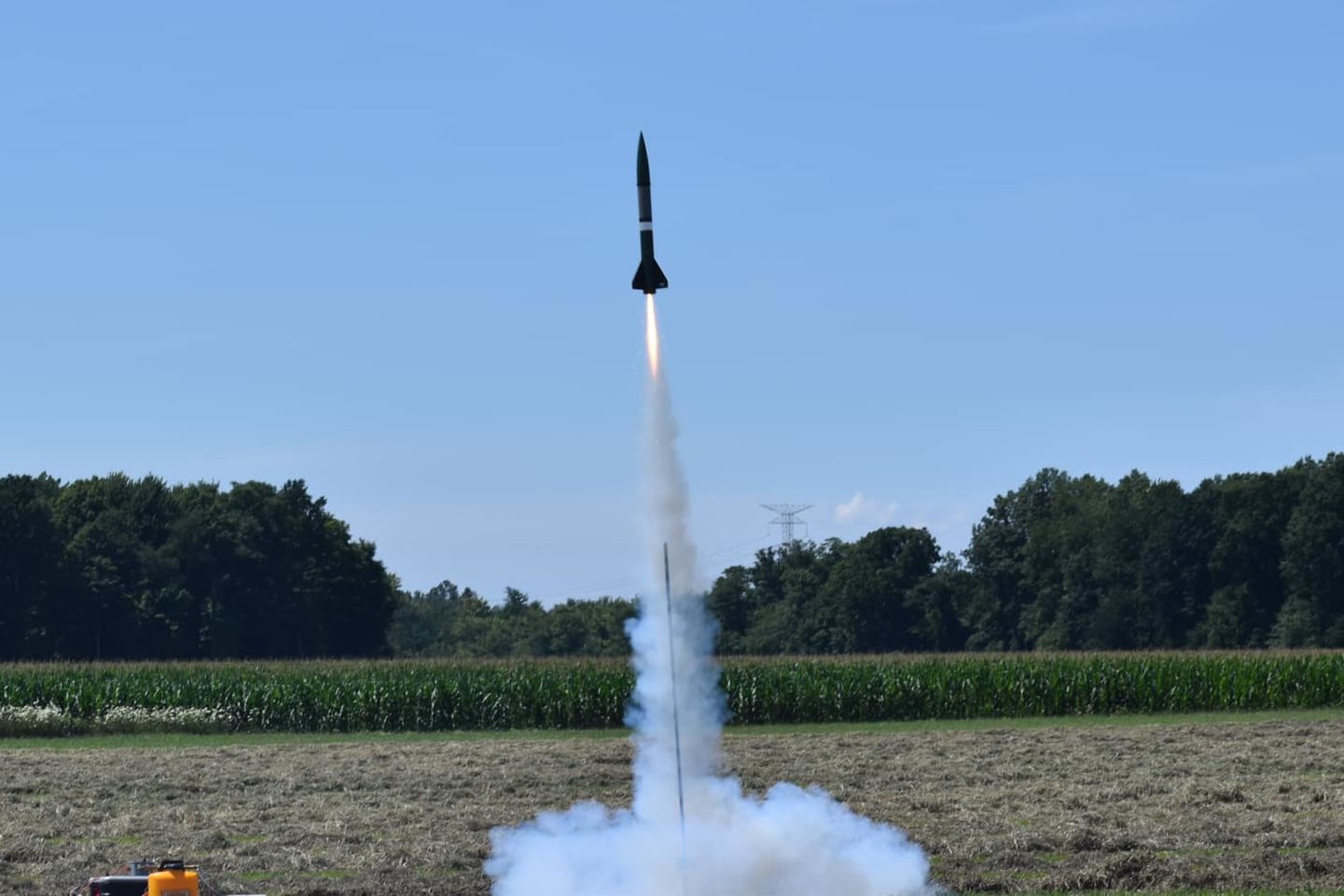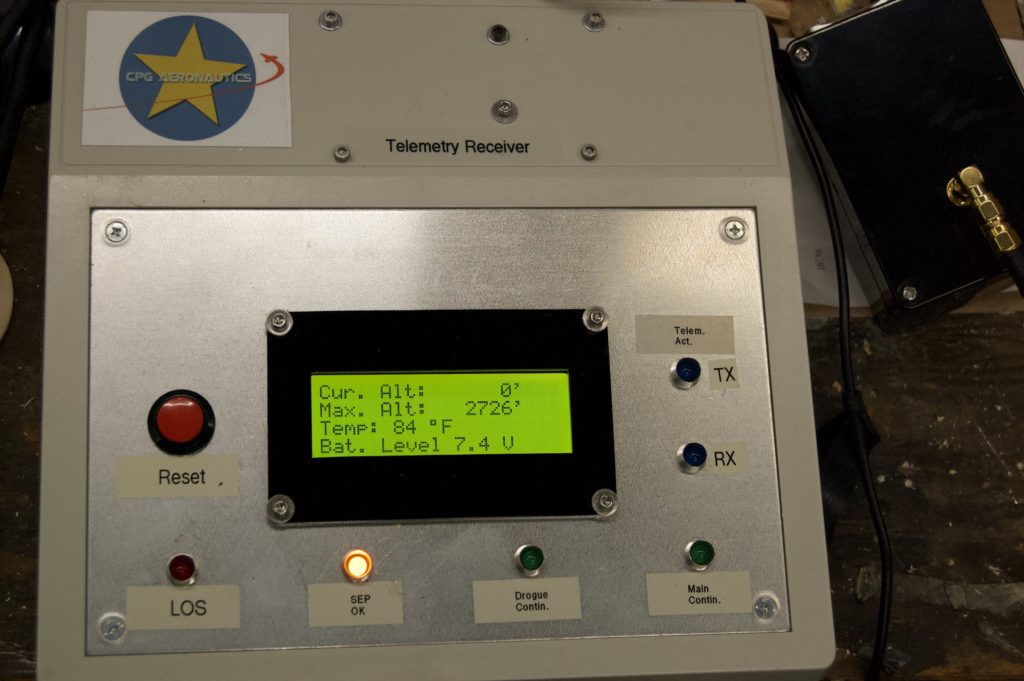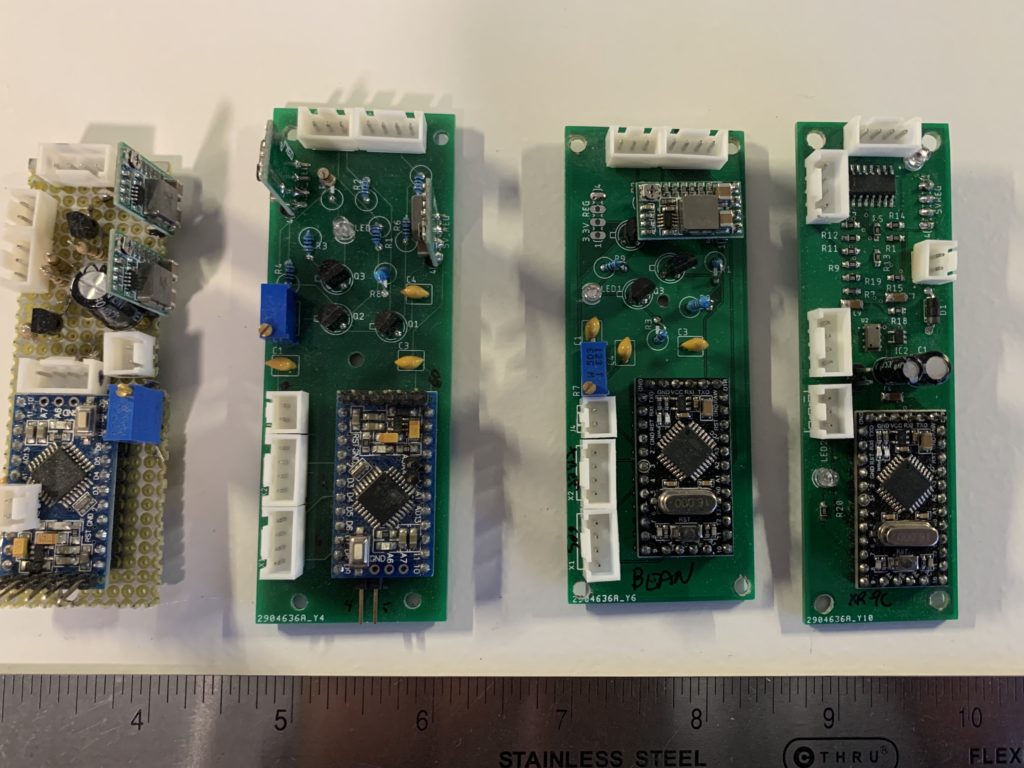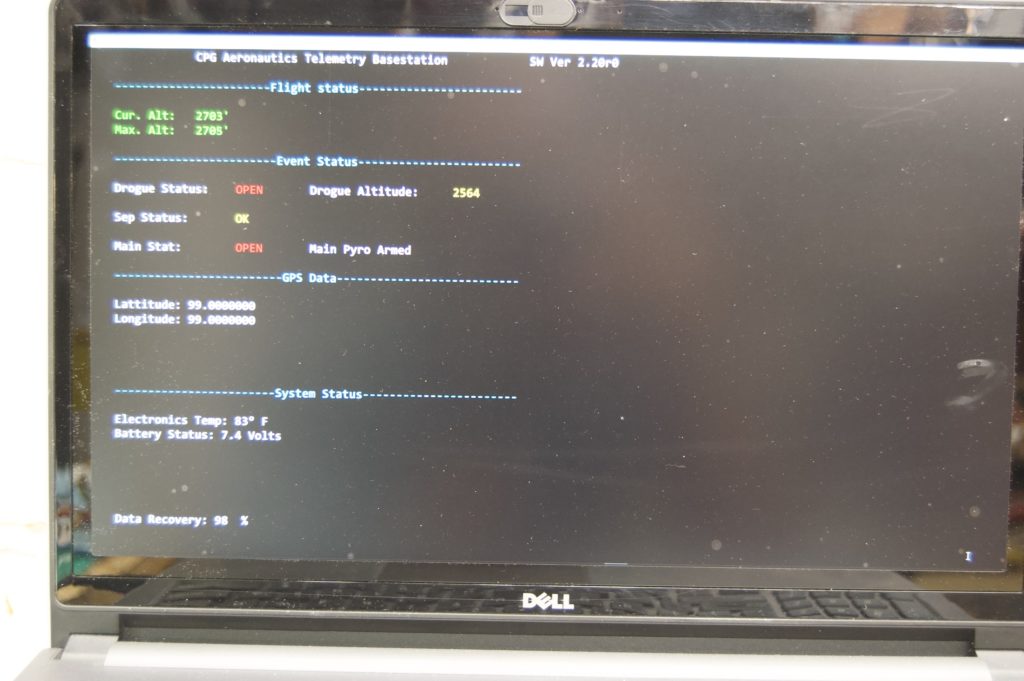The road to my Level 2 Certification attempt: The DEMO-1 mission
July 25, 2020 – Amherst, OH
The culmination of 6 years of background research has come down to the first rocket launch of the DEMO series of test launches.

“There was SO much going on beyond just the launch & the data on the screen. After so many life delays, 6 years after the start of this project, a MAJOR milestone met & knocked over! Yesss!!!!” This was my reaction to the launch of DEMO-1 on my social media feeds.
What is “DEMO”?
DEMO is series of test launches that make up the first formal steps towards getting my Level 2 certification. I like to throw in something a little “extra” to keep my certifications “interesting”. Why do this the boring way? LOL.
Seriously, after watching many L2 launches, the one thing that gets me is the fact that many of these L2 rockets simply disappear from view when reaching altitudes of over a mile. This makes me nervous. Sending my rockets to altitudes where you can barely see them (if at all), and not knowing what is going on…hoping all works well. That is spooky.
So, I thought, why not develop a telemetry system that is capable of reporting back all relevant information on the status of the rocket, where it is, and more? This project started in 2014 with tests to gain experience with sending data over radio links from a rocket in flight. In those tests, the data consisted simply of Nesaru’s current altitude as reported by the on-board Perfect Flite Stratologger via its data port.
The resulting data stream was collected by the simple telemetry base station, which kept track of events. The telemetry receiver was actually an early prototype (code-wise) of the RFC-100 core flight computer!
The Nesaru tests resulted in a fairly solid telemetry link system to build upon. After a few year delay due to life, I began the next step…building the actual flight computer and its ground support systems. I gave the next phase of the program the code name of “DEMO”, for “Demonstration of feasibility”.
The road to first launch of this DEMO program started on September 2019.
This is when the final design and construction of the ground station telemetry receiver gear, and writing of software began.
By February 2020, The Rocket Flight Computer (RFC-100) version Block 1 was ready for it’s test flight. This launch would test the hardware and the initial version of software. This was to be DEMO-1, slated to launch March or April 2020.

Mission DEMO-1 was to be followed by a series of test launches through much of the Summer / Fall 2020 from various rocket meets in Ohio & Upstate New York.
Here is a list of the original (planned) DEMO test launches, and their objectives:
DEMO-1: RFC Block 1 flight computer test. Real time telemetry and base station with simple altitude data and minimal flight event reporting.
DEMO-2: RFC Block 1 test, this time with on-board GPS telemetry tests. Add code for rich telemetry reporting data.
DEMO-3: RFC Block 2 test. Verify new RFC-100 core computer version via first in-flight test, Test “Mission Control” mission screen. This is done by connecting a computer to the Telemetry base station receiver to display detailed flight status information.
DEMO-3: RFC Block2 test. Add code for flight events, This test will consist of observing the actions of event software code to ensure the computer makes the correct decisions at the correct times during flight.
DEMO-4: RFC Block 4 test: First test of new RFC-100 core computer hardware, test dual channel pyro control by firing events AFTER motor delay and observe status telemetry event status reports.
DEMO-5: RFC Block 4 test: First flight that allows RFC-100 flight computer to actually control flight events.
DEMO-6: RFC Block 5 test: First flight of RFC with integrated dual channel MOSFET for flight events, and in-flight apogee test.
All 6 of the DEMO mission flights would be flown on the rocket “Mr Bean” – a rocket I inherited from my friend, Andrew Kleinhenz. I chose this rocket due to it’s four inch diameter airframe, and roomy payload section. Plenty of space to fly test electronics!
COVID changes everything
Once the news of Covid-19 spread, and governments shut down all group activities (including rocket meets) for an indefinite period of time to prevent the rapid spread of the disease.
In an attempt to not stall the project, I devised methods to test the operation of the RFC-100 core computer in my rocket lab.
This testing made progressing through RFC versions block 1 through 4 without actual flight tests possible.

This progression testing resulted in a total rewrite of much the code in the flight computer. By the time we were able to gather together to launch again, the objectives list for DEMO-1 changed to a list of MAJOR benchmarks – all at once, bypassing small step testing. As a result, I gave it the status of “All-Up test”.
Rocket lab tests suggested that everything SHOULD work fine during this flight. The danger for me, is if something should go wrong, then tracking down the exact cause of any hardware / software problem could prove difficult.
Given the unpredictable nature of the COVID situation at the time, which means we could be shut down again for another long period of time, I pressed forward with the “All Up” test flight.
The NEW Objective list for DEMO-1:
- Flight Test of RFC flight computer Block 4 hardware. (skipping intermediate hardware version tests).
- Test code for flight events – observing the actions of event software code to ensure the computer makes the correct decisions at the correct times during flight. (skipping tests of less complicated code versions first)
- test on-board GPS data into telemetry feed. (adding more complexity to first-time ever in-flight code tests)
- Test of the “Mission Control” computer system to display rich telemetry data in real time. (same challenge as above, but necessary should something go wrong in the RFC-100 code.
It’s going to be a Nail Biter!
The lack of the small step in flight progression tests of the hardware, and software architectures, where no part of the system or code has seen in-flight testing raised the stakes considerably. It would either be a really, really epic win, or a back to the drawing board situation for me after the flight.
To aid in post-flight analysis, friend Andrew Kleinhenz volunteered to man “Mission Control” and communicate to me via radio key data points from the telemetry data. For this flight, I will be near the LCO Officer to observe the rocket in flight. In addition, I decided to recorded the “data screen” using a video camera (aimed at the screen) to record all events.

Launch day
After prepping Mr. Bean for launch, and verifying that the flight computer and ground support systems were ready for flight, I did a logistics review with Andrew, and launch was on!
Mr. Bean lifted off to a beautiful straight as an arrow flight to a reported altitude of 1259 feet, and all systems performed flawlessly. I poured over all the initial data, and everything just worked. I was in disbelief. For such a complicated test, I was expecting SOMETHING to be off.
DEMO-1 for all its complications appeared to be an unqualified success. Time to get home, and really dig into the data post-flight.
Detailed review reveals an anomaly.
Running through the event data over and over, it became apparent that something was amiss with the reported altitude of DEMO-1. I devised a new test procedure in the rocket lab for follow up on a hunch I was having, and confirmed that there was a skew in the translation of data from the barometric sensor. This “skew” was slightly different in the other two RFC core computers – with one reporting the correct altitude in a simulated launch within a few feet.
I hand-modified a test RFC Core computer to use a different barometric sensor, and re-ran the tests. With the different sensor, the reported altitude was essentially spot-on.
RFC-100 block 5 core flight computer was re-designed to use the new pressure sensor.
Later, I determined that the issue was caused by over-heating the sensor during construction. By this rime, the new code for the sensor was completed, and RFC-100 Block 5 core computer was very far along. Because of this, I stuck with the new sensor.
Next step: DEMO-2, which has planned, an in-flight test of a modified RFC-100 Block 4 core computer. The RFC-100 is modified to use the new sensor. Also, a possibility of adding the objectives of the original DEMO-4 mission to the list as well.